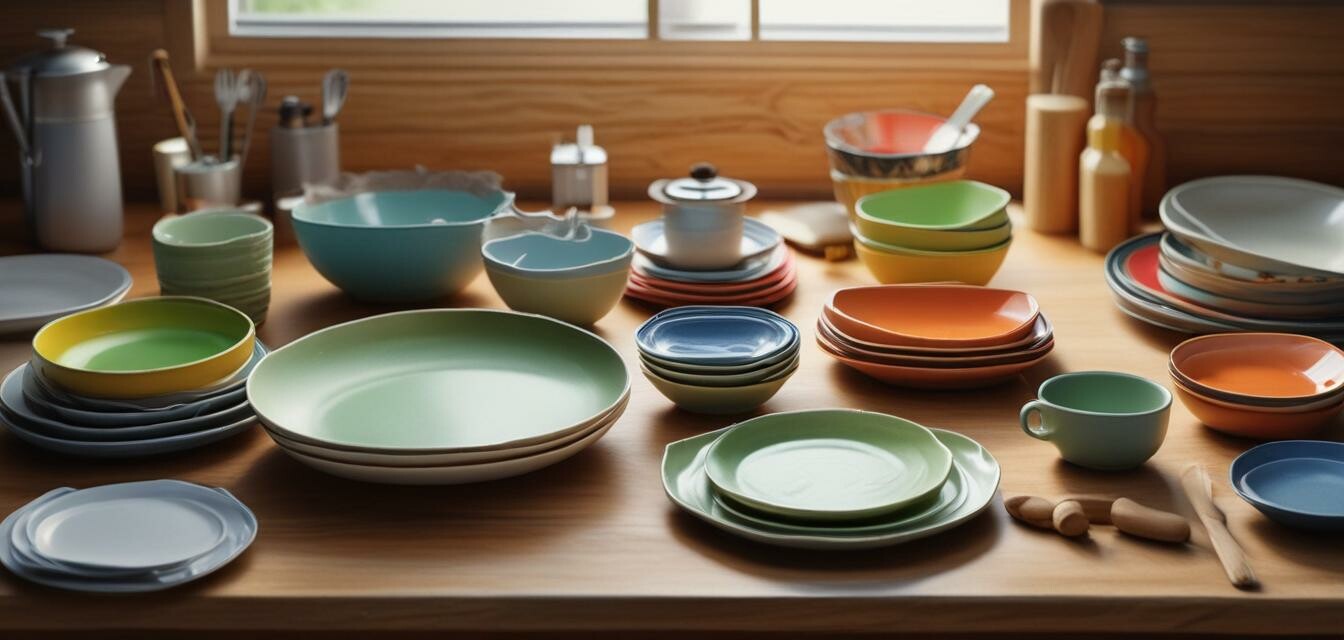
Understanding the impact of recycled materials
- Recycled materials in kitchenware reduce waste and promote sustainability.
- Using recycled products can decrease carbon emissions associated with manufacturing new products.
- Recycled kitchenware often boasts uniqueness, style, and appealing designs.
- Economically, investing in recycled materials supports eco-friendly brands and initiatives.
The use of recycled materials in kitchenware is becoming increasingly popular as consumers seek to make more sustainable choices. Not only does it help reduce waste in landfills, but it also supports the environment by reducing the need for new materials. In this article, we will delve into how recycled materials are being utilized in kitchenware and the positive impacts they have on sustainability and waste reduction.
What are recycled materials?
Recycled materials are products that have been reprocessed from consumed goods to create new items. In the context of kitchenware, this can include:
- Recycled plastics
- Recycled glass
- Recycled metals
- Recycled paper products
The journey of recycled materials
The lifecycle of recycled materials generally follows these steps:
- Collection: Used materials are collected from consumers and businesses.
- Processing: Items are cleaned and processed to remove impurities.
- Manufacturing: Recycled materials are transformed into new products.
- Distribution: The finished products are then sold to consumers.
Benefits of using recycled materials in kitchenware
There are numerous benefits associated with using recycled materials for kitchenware:
Pros
- Significantly reduces the volume of waste that ends up in landfills.
- Lowers energy use and greenhouse gas emissions compared to new materials.
- Promotes a circular economy by encouraging recycling and reusing materials.
- Fosters creativity and innovation as designers explore new sustainable materials.
Cons
- Some recycled materials may lack the durability of virgin materials.
- Quality control can vary based on source and processing conditions.
- Potential higher costs associated with certain eco-friendly brands.
Types of eco-friendly kitchenware made from recycled materials
There are many types of kitchenware that utilize recycled materials effectively:
| Type of Kitchenware | Material Used | Benefits |
|---|---|---|
| Plates and Bowls | Recycled glass and plastic | Lightweight, durable, and stylishly designed |
| Utensils | Recycled stainless steel | Long-lasting and easy to clean |
| Cutting Boards | Recycled bamboo or wood | Renewable material that's gentle on knives |
| Food Storage Containers | Recycled plastic | Helps to minimize food waste with airtight seals |
How to choose eco-friendly kitchenware
When selecting kitchenware made from recycled materials, consider the following factors:
- Look for certification labels that indicate the product is made from recycled content.
- Research brands’ sustainability practices and commitment to reducing waste.
- Compare durability and design to ensure it fits your kitchen aesthetic.
The big picture: Positive impacts on sustainability
Using recycled materials in kitchenware is not just about individual choices; it's about contributing to a larger movement towards sustainability. Here are some significant impacts:
- Waste Reduction: By using recycled products, consumers help divert waste from landfills.
- Resource Conservation: Reduces the need for new resources, conserving them for future generations.
- Community Support: Many eco-friendly brands are local businesses that benefit from direct consumer support.
Explore more eco-friendly options
Check out our other articles for more insight and options in eco-friendly kitchenware:
- Bamboo kitchenware
- Compostable kitchen tools
- Eco-friendly storage solutions
- Recycled glass dinnerware
- Reusable silicone products
Conclusion
In conclusion, the impact of recycled materials in kitchenware is evident in the benefits it brings to both the environment and consumer choices. As we move towards a more sustainable future, choosing products made from recycled materials is an important step in reducing waste and fostering conscious consumption.



